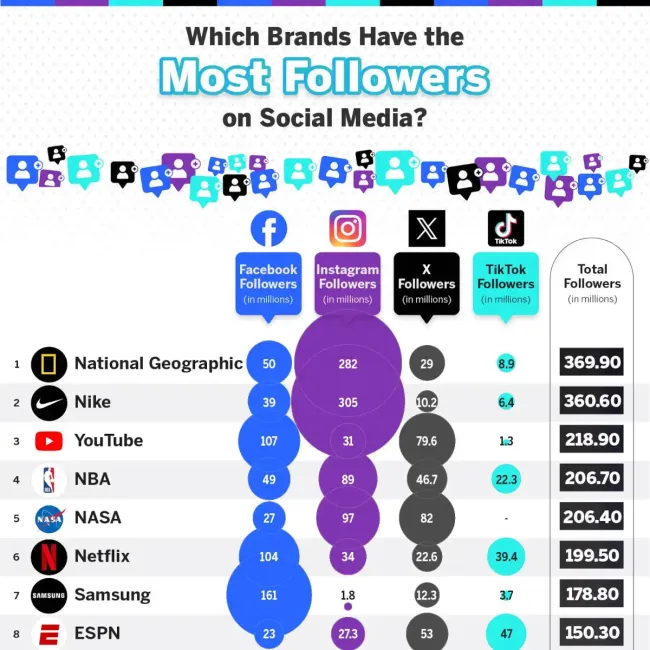What is market fragmentation?
Market fragmentation is the concept that a marketplace can divide into many small markets, each containing customers with distinct preferences or requirements.
The coffee shop market is a brilliant example of a fragmented market. Instead of one or two dominant chains serving identical products, today there’s a whole range of smaller niches, from artisanal spots to specialty bean roasters, and themed cafes to coworking spots. This variety means the market is fragmented.
Fragmentation becomes a greater factor over time as a market grows, so it’s no surprise that today we can see many that are heavily fragmented. Plus, with business ownership more accessible than ever thanks to the digital revolution – and niche interests and groups growing in popularity for the same reason – we’re left with a mosaic of new entrants catering to different micro-segments, or fragments.

Market fragmentation vs. market segmentation
Market fragmentation and market segmentation are two sides of the same coin, but crucially they’re not the same thing.
Market segmentation is a strategic tool companies use to deliberately divide a broad market into manageable, targeted groups based on specific characteristics like demographics or behavior. Market fragmentation, on the other hand, occurs naturally as consumer interests and market conditions evolve, leading to a scattered landscape of niche groups.
Free eBook: How to drive profits with customer segmentation
What causes market fragmentation?
Market fragmentation isn’t random; it’s typically the result of various evolving forces within the marketplace. Here’s a breakdown of the major causes and real-world examples of their impact.
New consumer preferences
The consumer push for products that align with their values and lifestyle is a major fragmentation driver. As new trends take hold and old ones fall out of favor, consumer preferences are in a constant state of flux – markets respond by splitting into niches.
For example, climate change anxiety and environmental awareness have fueled the rise of eco-friendly segments in various industries. The electric vehicle (EV) market is a very obvious example of this: demand from an ever-rising number of environmentally conscious consumers has driven the fragment forward and propelled relatively new manufacturers like Tesla.
Changes in technology
Advancements in technology will typically lower a market’s barriers to entry for new competitors and enable the creation of tailored products. We’ve quickly seen how the advent of online marketplaces and social media has empowered small businesses to reach specific customer groups more easily.
The creation of the internet led to the music market – once dominated by generic radio stations and music channels – receiving a new fragment in the form of online streaming. Spotify then used technology to offer personalized music experiences that fragmented the music industry even further.
Globalization
Just like globalization fuels diversity among people and within communities, it in turn does the same for the products and services being demanded. New submarkets are created and new businesses are launched to cater to them – often leveraging globalized supply chains to make it all happen.
Globalization – with the help of the internet – is responsible for the popularity of anime outside of Japan, and K-pop outside of South Korea. Whereas today anime and K-pop fan bases are easily found in Western countries, they were far more niche two decades ago.

Regulatory changes
New regulations can fragment markets by creating space for alternative products that comply with new rules. What we often find here is that compliance with the changed regulations becomes the new fragment’s unique selling point.
The organic food sector is a prime example of this. It’s a fragment of the groceries market that has grown in response to stricter food safety and farming regulations, and consumer demand for food products free of things like pesticides.
Economic shifts
Shifts in the economy inevitably impact purchasing power, which itself creates new market segments. For example, an economic recession will increase demand for cheaper, higher-value goods.
The 2008 financial crisis saw many consumers become more price-conscious, which led to the rise of budget grocery stores. Once peripheral players, discount chains like Aldi and Lidl tapped into the fragmenting grocery market by drawing customers away from traditional supermarkets – placing their focus on lower prices, not variety and brands.
Is market fragmentation good or bad?
This isn’t the most straightforward question to answer, because it really depends on who you’re asking for.
For consumers, it’s pretty much always good. Fragmented markets provide more choice, catering to a wider array of tastes and preferences. It means people can find products or services that feel like they were made just for them, rather than settling for something generic.
For businesses, on the other hand, it’s a mixed bag. On the upside, fragmentation can be a catalyst for competition and innovation, often resulting in better quality products and services for more customers. Companies are pushed to up their game, think creatively and personalize their offerings to stand out. Going back several steps, market fragmentation creates new companies altogether.
And what about the downside? For some businesses – especially the larger industry incumbents – market fragmentation often spells trouble. One big market transforming into multiple smaller ones will naturally lead to a rise in competition that can compromise a once dominant position for the clear leader.
Leveraging market fragmentation
Leveraging market fragmentation can be a game-changer for businesses – particularly nimble and adaptable startups and smaller companies.
By identifying and capitalizing on a market fragment before anyone else does, a company can carve out a niche for itself to operate in with less competition and more visibility. This first-mover advantage means that a business can establish strong ties with its customer base early on and set the stage for robust brand loyalty – which itself can often lead to word-of-mouth promotion and repeat purchases.
A business leveraging market fragmentation is also empowered to allocate their resources in a more cost effective way. That’s because, instead of trying to cater to everyone and spreading themselves too thin, they can tailor their products, services and marketing efforts to resonate deeply with a well-defined audience.
Effective market research is almost always a prerequisite for any company leveraging market fragmentation. It provides the insights needed to identify the unique needs, preferences and habits of a specific target audience. Once a business understands its chosen fragment, it can effectively personalize itself to that particular group.
Falling victim to market fragmentation
Market fragmentation often spells trouble for an industry’s big guns – the giants who’ve long relied on casting a wide net to catch as many customers as possible. These larger enterprises, with their mass-market strategies, suddenly find that their one-size-fits-all approach starts to look a little out of touch. What was once a strength – their broad appeal – becomes a weakness.
The crux of the problem is a lack of awareness or acknowledgment of emerging market fragments. If a business doesn’t recognize these evolving niches or understand their unique dynamics, it can’t effectively adapt. And when these larger enterprises do notice the shift, their size and established ways of working can make it hard to pivot quickly – often leading to a disconnect with consumers.
Make no mistake, these big guns will still often do very well and maintain more than enough influence for one business – look at Starbucks in the fragmented coffee industry – but fragmentation will pose a threat to their market share. The impact of that threat can be mitigated through regular market research, helping a business stay well acquainted with their evolving market.
Master your market: Download your free guide to customer segmentation
Navigating the maze of market fragmentation can be complex, but understanding how to segment your customer base is a powerful way to steer through it. ‘How to Drive Profits with Customer Segmentation’ is your free guide to mastering this craft.
It’s all about turning the challenges posed by a fragmented market into opportunities by creating targeted groups within your audience. From understanding the what and why to getting down to the nitty-gritty of building your first segmentation study, this eBook is packed with insights to help you connect with your customers more effectively.
Download your free copy now and start tailoring your strategies to meet the exact needs of every market segment.
Free eBook: How to drive profits with customer segmentation


